Comprehensive Homeopathic Approach to Monkeypox Treatment
Homeopathy offers not only preventive but curative remedies that can help you isolate at home and get better safely and naturally. Though homeopathic remedies fall under the OTC (over the counter) category, we strongly urge you to not self medicate and get treated under the supervision of a qualified homeopath. With online doctor consultations, you can get expert medical guidance in the comforts of your home and have prescribed medicines door delivered anywhere in the world. For benefit of our readers, we present the recommendations of Dr.Pranjali, our empanelled expert, that can help you understand the available medicines in homeopathy for treatment of monkey pox.
Commonly asked questions about monkeypox treatment answered
| What is Monkeypox? | A viral infection that can spread from animals to humans and from person to person (viral zoonotic infection) |
| Is monkeypox curable? | Yes. Monkey pox symptoms typically last 2 -3 weeks and usually go away on their own or with supportive care such as homeopathy medication for rashes, pain or fever, pus formation and scar tendency |
| What are the Symptoms of monkeypox? | Initially it may appear as skin rash with fever, headache, muscle aches, back pain, low energy, and swollen lymph nodes |
| The rashes may progressively develop into pus-filled bumps all over the body that may have yellow and later greenish color in appearance | |
| The rashes may develop crusts which will eventually dry up and fall off (scabs) | |
| Can you infect your pet with monkeypox? | Yes. An infected person may easily pass the virus to pets (such as cats, dogs, horses etc.) |
| I am currently vaccinated, can I still get infected with monkeypox? | People who were vaccinated against smallpox may have some protection against monkeypox but that does not ensure 100% immunity. WHO has recently approved a monkeypox vaccine but until you get the shots in your country, you should be on the guard and prevent contact with infected person |
| What steps to take if I am infected with monkeypox? | If you suspect to be infected with monkeypox, you need to protect others by seeking medical advice and isolate until you have been diagnosed and tested. If confirmed with monkeypox, you should isolate from others until all of your lesions have crusted over, the scabs have fallen off and a new layer of skin has formed underneath. This means 2-3 weeks of home isolation |
| What is the treatment for monkeypox? | WHO advises medication like analgesics for pain and antipyretics for fever to relieve some symptoms. It advises people with monkeypox to follow the advice of their health care provider while underlying the need to stay hydrated, eat well, and get enough sleep. |
Dr. Pranjali, an empaneled expert, recommends various homeopathic remedies for different stages of Monkeypox. These recommendations are based on the symptoms and conditions of the patients. For example:
Preventive Homeopathic Solutions: Variolinum
Variolinum 200 - Suggested as a preventive medicine to help build immunity against the virus. The recommended dosage is 2 drops once in the morning for 3 days, followed by a monthly dose of 2 drops until the epidemic passes. For children under 1 year, the dosage is 1 drop.
Early Stage Treatment: Aconite Napellus
Aconite Napellus 30 - Recommended for the initial stages of infection where symptoms may include a reddish skin rash and high fever with exhaustion. The suggested dosage is 2 drops thrice daily for 1 week. In the initial stages of Monkeypox, individuals often experience symptoms that include a reddish skin rash, often starting on the face before spreading to other parts of the body. Accompanying this rash, high fever and feelings of exhaustion are common, signaling the body's response to the viral infection. These early symptoms are crucial for early diagnosis and prompt treatment to manage the disease effectively.
Addressing Severe Symptoms: Arsenicum Album
Arsenicum album 30 - Used in later stages where rashes intensify with severe burning and sore throat develops. The dosage is 2 drops thrice daily for 1 week. In the later stages of Monkeypox infection, the intensification of symptoms, including severe rashes with burning sensations and the development of a sore throat, is primarily due to the progression of the viral infection. The virus causes extensive inflammation in the skin and mucous membranes, leading to more pronounced and painful rashes. The burning sensation is often a result of nerve irritation caused by the inflammatory response. Additionally, the virus can affect the mucous membranes, including those in the throat, leading to soreness and discomfort. These symptoms indicate an advanced stage of the infection, requiring careful medical management to alleviate discomfort and prevent complications.
Managing Fluid-Filled Rashes: Mercurius Solubilis
Mercurius Solubilis 30 - Applicable when rashes are fluid-filled with discharge. The recommended dosage is 2 drops thrice daily for 4-5 days. In Monkeypox, the development of fluid-filled rashes with discharge is due to the body's immune response to the viral infection. The virus causes inflammation in the skin, leading to the formation of vesicles or blisters. These blisters are filled with fluid as a result of the body's attempt to isolate and fight the virus. The discharge, often seen as pus, is a mixture of white blood cells, cellular debris, and serum, indicating the body's ongoing battle against the infection. This stage requires careful management to prevent secondary infections and facilitate healing.
Treatment for Mature Rashes: Pulsatilla
Pulsatilla 30 - For stages where rashes have matured with yellow and green pustulation. The patient may also experience mental disturbance. The suggested dosage is 2 drops thrice daily for 4-5 days. As Monkeypox progresses, the rashes can mature into yellow and green pustules due to the accumulation of white blood cells, dead tissue, and serum as part of the immune response to the virus. This color change signifies infection and the body's efforts to heal. Additionally, the physical discomfort and visible nature of these symptoms can lead to mental disturbances such as anxiety or distress, as patients cope with the illness's impact on their appearance and overall well-being. This stage highlights the importance of both medical and psychological support in managing the condition.
Final Stage Care and Scar Prevention: Thuja Occidentalis
Thuja Occidentalis 30 - Used in the terminal stage of rashes with crust formation. It is believed to help prevent scar formation after the crusts fall off. The recommended dosage is 2 drops thrice daily for 1 week. In the terminal stage of Monkeypox, the rashes undergo a process of crusting as part of the natural healing cycle. This occurs when the fluid-filled pustules dry out and form crusts or scabs. The formation of crusts indicates that the body is recovering, as the skin underneath begins to heal and regenerate. This crusting stage is a sign of the virus's lifecycle nearing its end, but it still requires careful management to prevent scarring and secondary infections.
Disclaimer: The medicines listed here are solely based on suggestion made by doctor on You Tube whose reference is provided. Homeomart does not provide any medical advise or prescriptions or suggest self medications. This is a part of customer education initiative. We suggest you consult your physician before taking any medicines


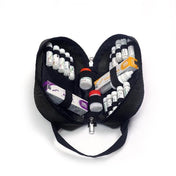


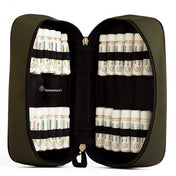
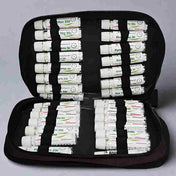
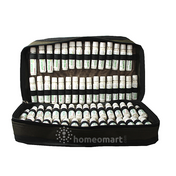

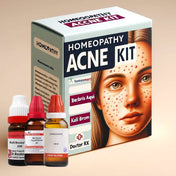
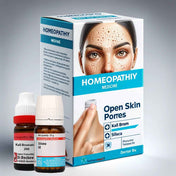
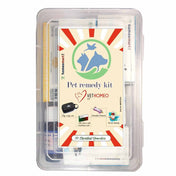
2 comments
मेरे हाथ में स्क्रीन फाल्ट हुआ है मुझे दवा मंगवानी है
Only Vatiolinum 200 is Sufficient
Once in a week.for one month
Or 2 doses at an interval of 2hrs stop .Continue 1 dose after 7 days,for 5 days at a stretch.stop.